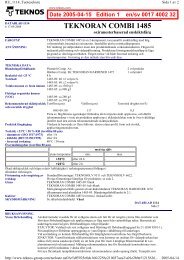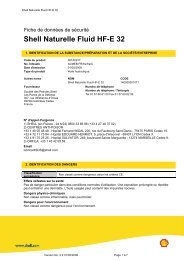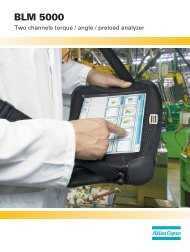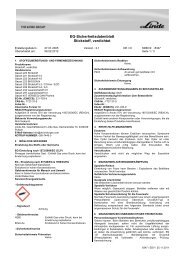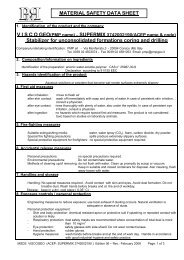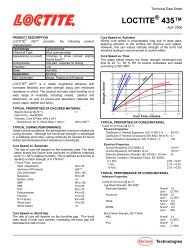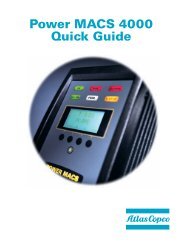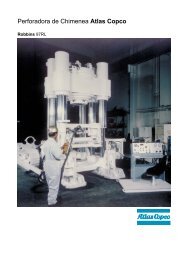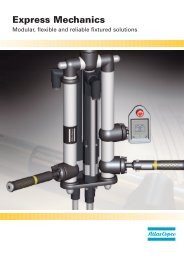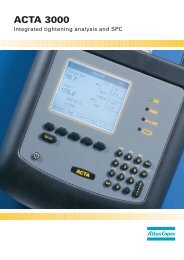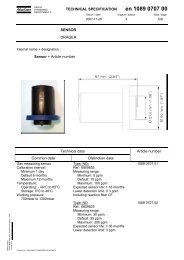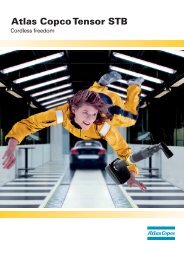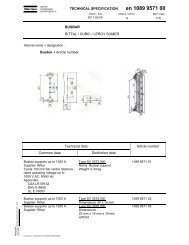Ergonomics - Atlas Copco
Ergonomics - Atlas Copco
Ergonomics - Atlas Copco
You also want an ePaper? Increase the reach of your titles
YUMPU automatically turns print PDFs into web optimized ePapers that Google loves.
46<br />
heavy, assembly work is often highly repeti-<br />
tive. Work organization and work-<br />
station design are therefore very important.<br />
Design for good ergonomics<br />
For the operator performing repetitive<br />
tasks, maintaining a correct posture is of<br />
great importance. The location of joints<br />
and the selection of machine type must be<br />
considered. Screwdrivers are available in<br />
straight or pistol grip versions. Working<br />
postures with the wrist in a natural position<br />
are preferred.<br />
Modern straight tools have a textured<br />
surface that increases the friction between<br />
the tool and the hand. This enables the oper-<br />
ator to hold the machine without excessive<br />
effort. Since the tools are usually light and<br />
the tightening operation tends to make them<br />
rotate in the hand, the operator absorbs the<br />
reaction torque at the end of the tighten-<br />
ing sequence. The magnitude of this kind of<br />
shock reaction is related to the type of joint<br />
and the function of the tool. With hard joints<br />
and pneumatic tools with a fast clutch, the<br />
tendency of the tool to rotate in the opera-<br />
tor’s hand, caused by the impulse, is low.<br />
Electric screwdrivers, on the other hand,<br />
can be controlled so that the operator experi-<br />
ences almost the same torque reaction, in-<br />
dependent of joint stiffness. Thus, the<br />
muscles in the operator’s arm are more<br />
relaxed. For this reason, many vehicle<br />
assembly plants permit a higher torque<br />
before torque reaction supports are required<br />
for electric tools than for pneumatic tools.<br />
Screwdrivers often have a push-to-start<br />
trigger function. Thus, the tool starts itself<br />
when the bit is pressed against the screw.<br />
Different screw heads require different<br />
amounts of force to keep the bit in place.<br />
Therefore the screw must be selected with<br />
care to avoid excess load on the operator.<br />
Safety<br />
Most screwdrivers are low-powered tools and<br />
represent a low safety risk to the operator. As<br />
regards pneumatic tools in the upper torque<br />
range, however, if the clutch is wrongly<br />
adjusted, it may fail to disengage at the end<br />
of the tightening sequence. Therefore the<br />
clutch must always be tested before the tool<br />
is installed at a workstation.<br />
The air pressure along the assembly<br />
line must be controlled and sudden pressure<br />
drops must be avoided. If a pressure drop<br />
occurs during tightening, the torque from the<br />
motor may not be strong enough to disen-<br />
gage the clutch and the operator might be<br />
forced to absorb the reaction torque without<br />
any previous warning. This may cause wrist<br />
problems.



